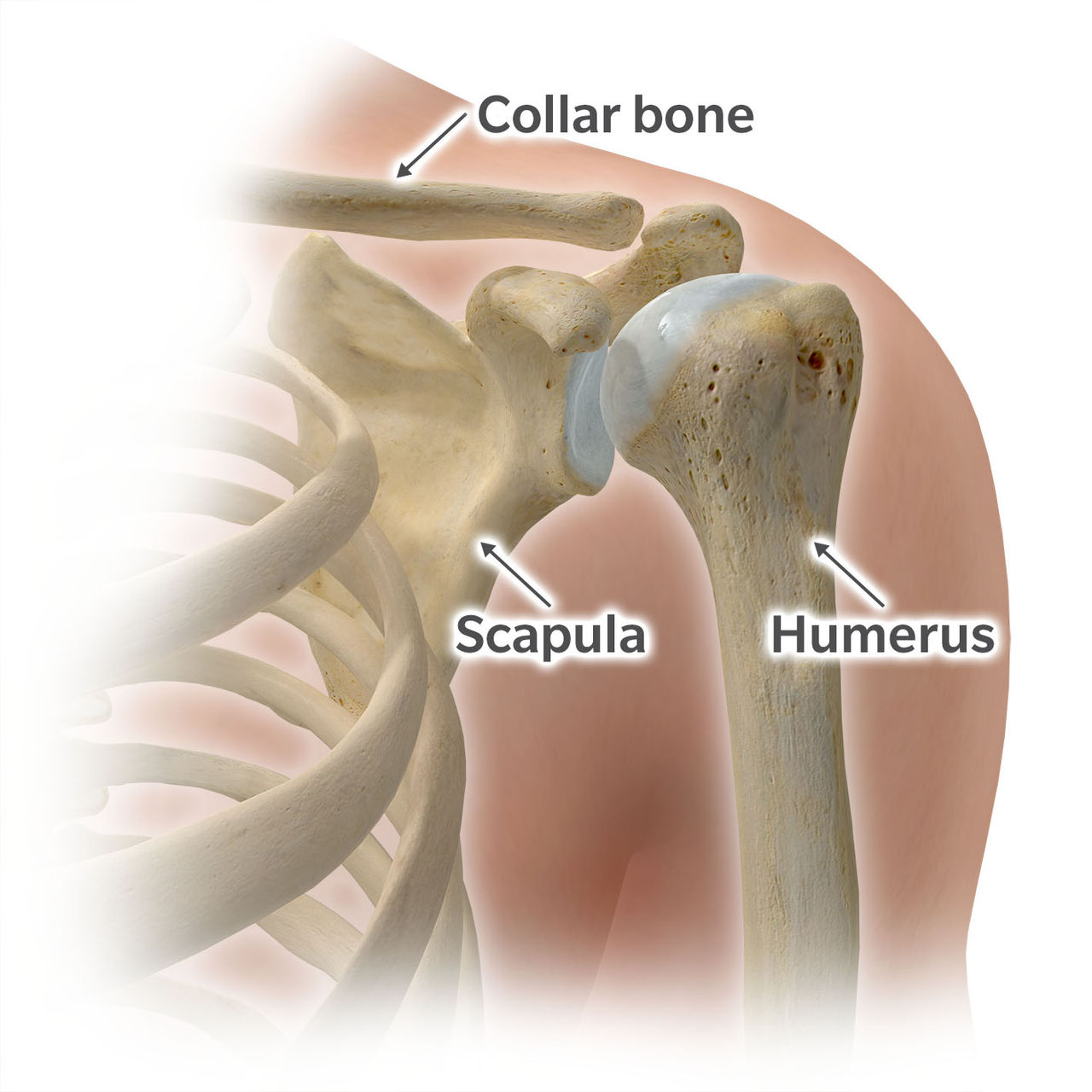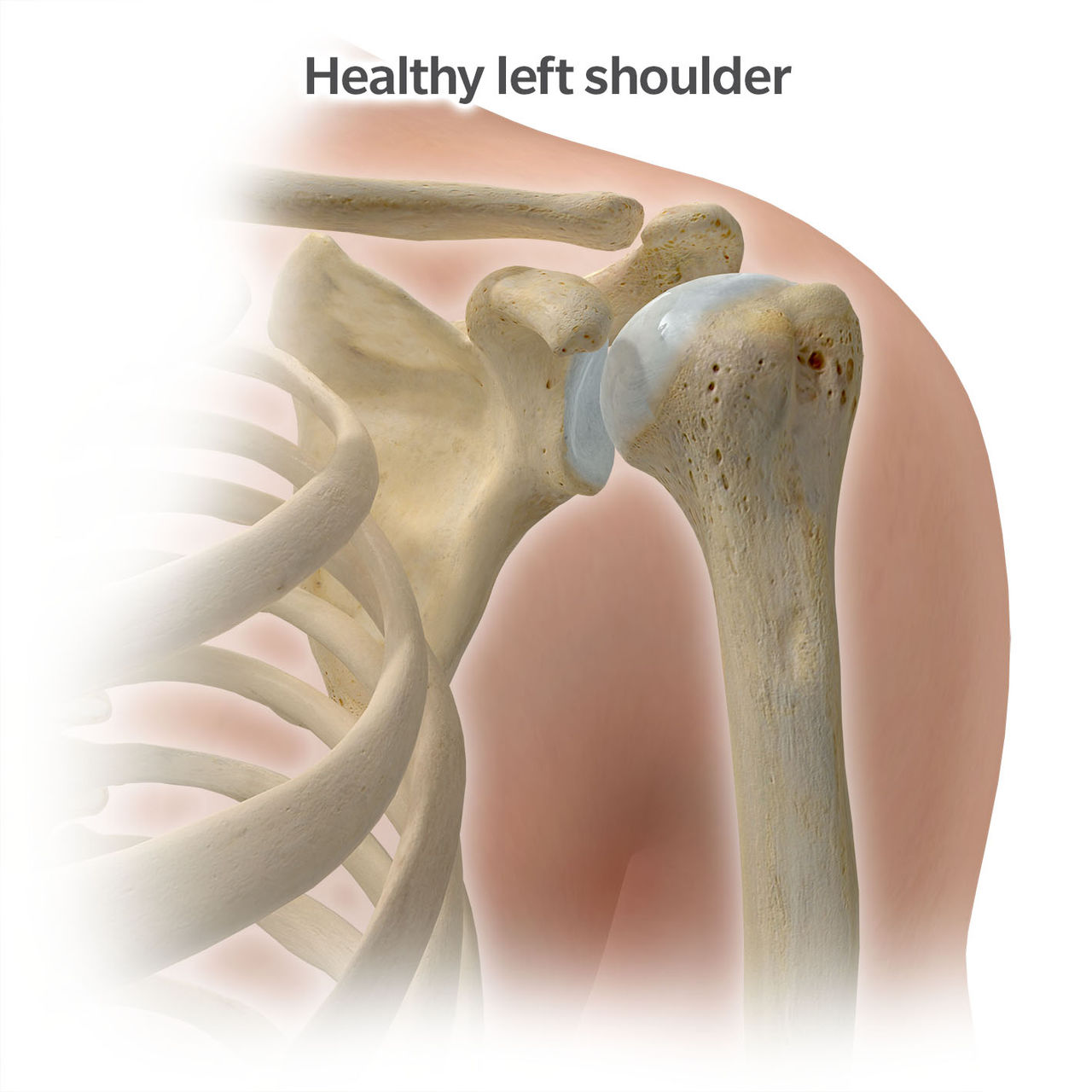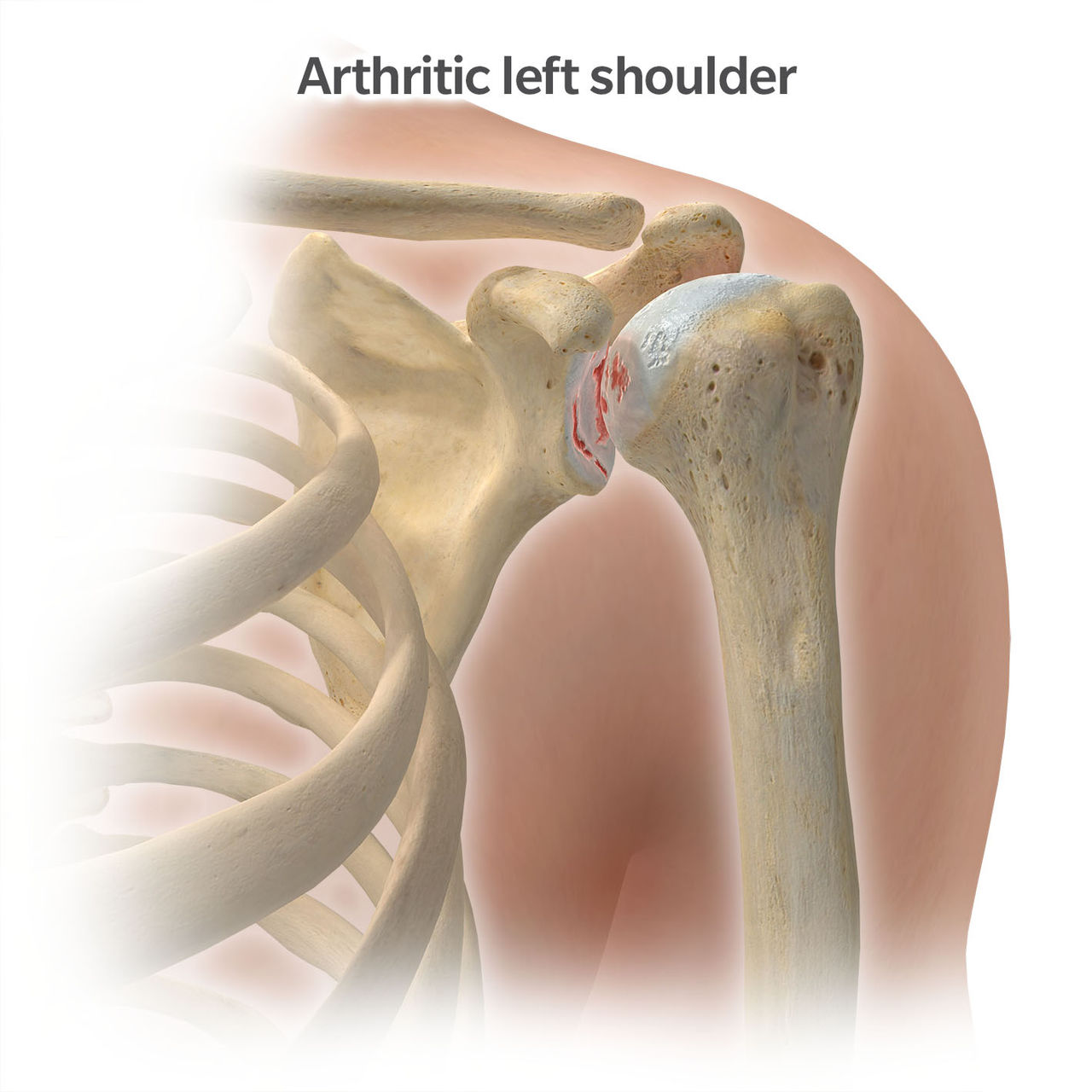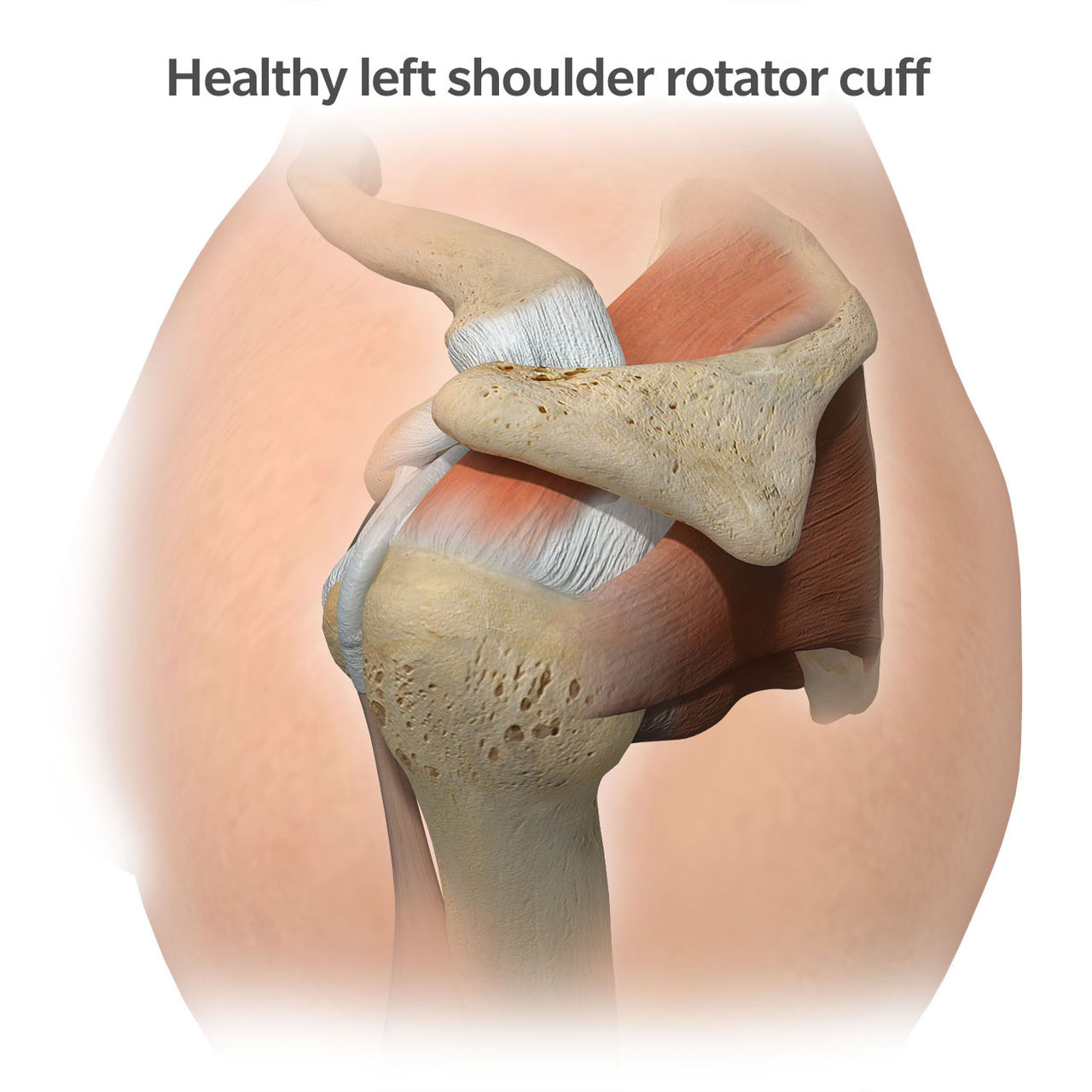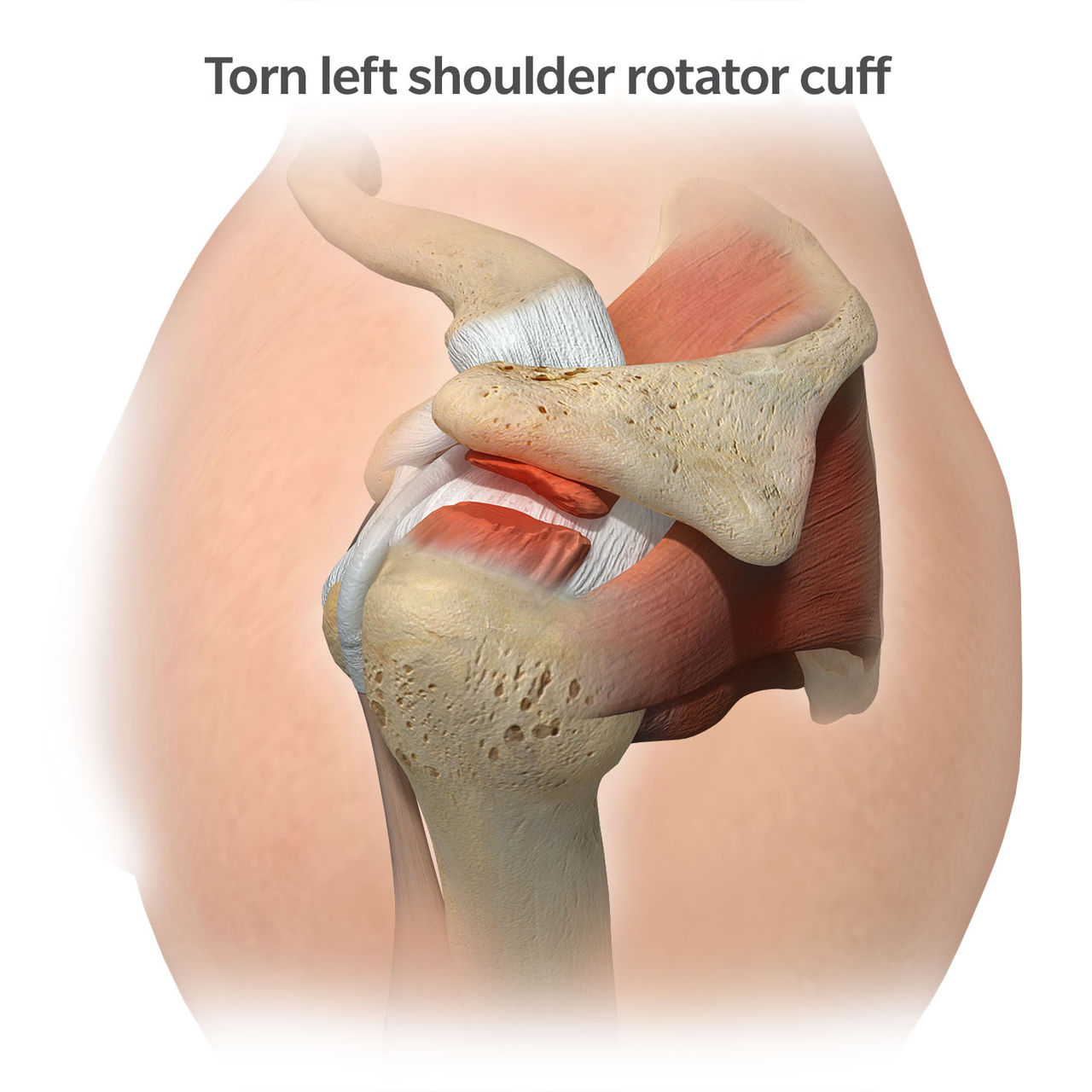The rotator cuff is a group of four muscles (supraspinatus, infraspinatus, teres minor, and subscapularis) that attach on the upper part of the humerus and help stabilize your shoulder as well as provide strength. There’s also an important muscle outside your rotator cuff called the deltoid that’s imperative for powering the shoulder joint. This is the muscle that you can feel underneath your skin on the outer part of your shoulder.
In a healthy shoulder joint, the bone’s surface, where the ball and socket rub together, is covered with a smooth, tough protective tissue called cartilage. Arthritis causes damage to this area of the bone’s surface and cartilage. These damaged surfaces eventually become painful as they rub together.
As you might expect, there are a number of reasons why you might be feeling pain in your shoulder including arthritis, rotator cuff tear, dislocation, and more.




